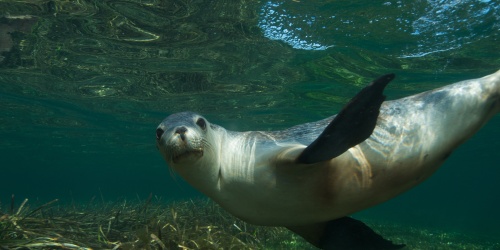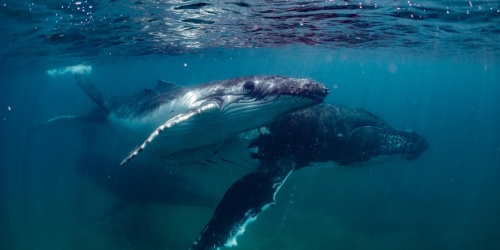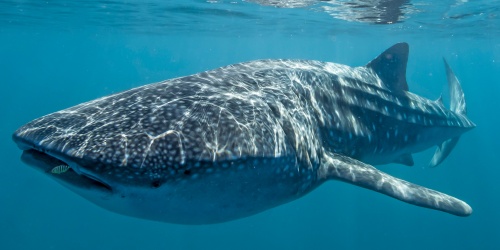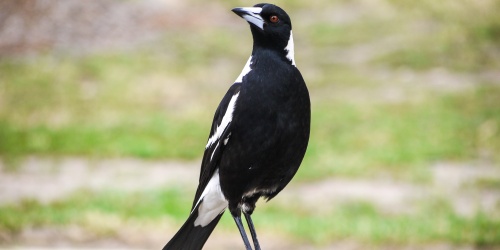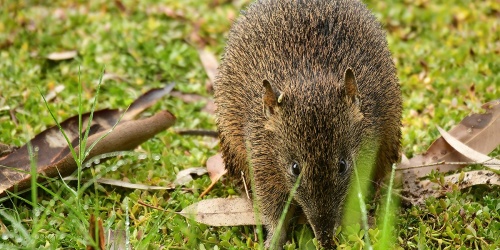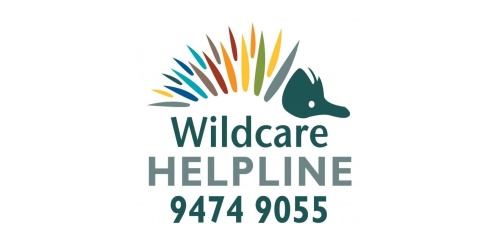Be Seal Wise
A management program for seal interactions in Western Australia developed by the Department of Biodiversity, Conservation and Attractions (DBCA) to guide management of tourism, recreation and other human interaction activities affecting seals in WA state waters.
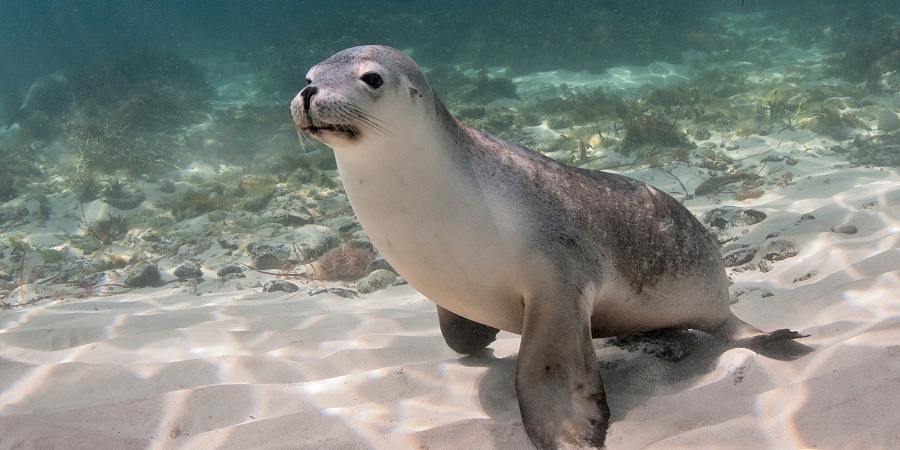
Included within the management program is a trial of in-water interaction tours with Australian sea lions. The trial applies a higher level of management in locations that receive high visitation in Jurien Bay and Shoalwater Islands marine parks. The trial is designed to manage impacts on this endangered species, with tour operators working under licence conditions that address conservation and safety outcomes. Licensed interaction tours allow visitors to experience and appreciate these engaging animals in a managed way. Find out more about the trial in the download section below.
Seals are often sighted along Western Australia’s coastline and in estuaries. Seals are protected in Western Australia with minimum separation distances required between people and seals in the water, on land, in vessels and when using aerial devices (including drones).
With an increased focus on the conservation status of seal populations, it is important that you play your part in helping to protect these animals, by ensuring you don’t disturb their natural behaviours. Disturbance of seals on land and in the water can result in reduced time spent feeding and resting, sometimes resulting in reduced body condition.
Some aspects of seal behaviour can make us think they are injured when they are not. Seals need to rest for long periods and sometimes people confuse this long rest time with them being sick or injured. Seals recover quickly from most injuries as most wounds are generally superficial and will heal by themselves. Fortunately, reports of sick or injured seals often turn out to be false alarms and, in most cases, seals do not need human intervention.
It is important to note that seals naturally ‘haul out’ or come onto land to rest, moult and recuperate.
Seal pups die from natural causes each year. More than 10 per cent die in the first two months, and more seals die when learning to hunt, from sickness and old age. In these cases, it’s best not to intervene and instead, and let nature take its course.
When does a seal need your help?
The Seal Wise Guide will help you recognise normal seal behaviour when human intervention is not required, and when and how you should report a sick or injured animal.
It is important that you do not approach a sick, injured or resting seal or attempt to disentangle an entangled seal. Experienced Parks and Wildlife officers are trained in assessing and attending to injured wildlife, reducing further disturbance and injury to the animal and members of the public.
| Description | Common questions | Seal behaviour | Should I report this? | Advice | What happens next? |
|---|---|---|---|---|---|
| Seal on the beach | There is a seal on the beach, is it dead? It's not moving much, is it injured? Why isn't the seal in the water? | Seals spend a great deal of time out of water resting. This is normal. Some species such as the Southern Elephant Seal, spend significant time moulting (shedding fur) on land and should be left undisturbed during this process. They may stay in the area for several days without movement. | NO | Leave alone and keep pets away. | |
| Holding a flipper in the air 'Flipper Sailing' | There is a seal in the water with its flipper in the air, is it injured? | Seals often raise a flipper in the air when lying on land or swimming. This is a natural behaviour they use to thermoregulate (keep cool or warm up). People sometimes mistake this for a seal in distress. | NO | Leave alone and keep pets away. | |
| Seal curled up in a ball ‘flipper sailing’ at Henderson WA | There is a seal that looks like it is entangled as it isn't putting its tail down. Does it need help? There is a seal with what looks like a broken back swimming near the jetty. Does it need help? | Seals put their rear flippers up and their front flipper around and grab that front flipper to ‘sail’, another form of thermoregulating. They can stay like this for up to an hour. | NO | Leave alone and keep pets away. | |
| Extremely poor body condition | There is a seal with ribs/hip bones showing, what should I do? | Seals may suffer from poor health or body condition due to sickness, old age, dehydration or lack of food. | YES | Do not approach and call the Wildcare Helpline | A Parks and Wildlife officers may need to assess the animal. Photographs taken from a safe distance (>30m) may help an officer identify if the poor condition is normal or may need assessment. |
| Wound | There is a small wound on a seal, what should I do? | Seals often fight with each other over territory or a mate, resulting in minor cuts or bites. These wounds normally heal quickly and don’t need human help. | NO | Leave alone and keep pets away. | |
| Injury | There is a seal with a large injury, what should I do? | Seals are sometimes seriously injured through boat collisions, shark bites or may be deliberately hurt by people. Wounds can look severe, but heal quickly. | YES | Do not approach. Call the Wildcare Helpline | Parks and Wildlife officers will assess and attend as required. |
| Entanglement | There is a seal entangled with rope, line or fishing hooks, what should I do? | Seals occasionally become entangled in fishing line, hooks, netting or other foreign objects. Entangled seals need help by experienced and trained people soon as possible. | YES | Do not approach or attempt to disentangle the animal. Call the Wildcare Helpline | A Parks and Wildlife officers will assess the animal. |
| Eye injuries, infections and secretions | There is a seal with weepy eyes and looks like it is crying. Is it injured? | Seals continuously secrete tears to lubricate their eyes. | NO | Leave alone and keep pets away. | |
| There is a seal with an injured eye, what should I do? | Eye injuries and infections can affect a seal's ability to hunt. If the eye is cloudy or is heavily secreting mucous or blood, the seal may need help. | YES | Leave alone. Do not approach. Call the Wildcare Helpline | Parks and Wildlife officers will assess and attend as required. | |
| Parasites | There is a seal with a hook in its nose or mouth, can you come and help? | Seals often have parasites that may be visible through the mouth or nose and may look like a foreign object. | YES | Do not approach. Call the Wildcare Helpline | |
| Healthy pup on a beach or rocks | There is a small seal by itself, what should I do? It’s been washed up, Seals don’t sit on rocks. Does it need help to get down? | Seal pups spend a short time with their mothers. After that they are on their own. During this period, juveniles can often be found resting on our beaches. Well-meaning people have picked up young seals thinking they are abandoned, causing disturbance or injury to the animal or person. Please don’t touch them as it causes unnecessary stress. | NO | Leave alone and keep pets away. | |
| Healthy juvenile on a beach or rocks | There is a baby seal by itself that looks to be in poor condition, what should I do? No one is helping the poor baby. Should I pick up the baby seal, poor water on it or take it to a Vet? | Seal pups are commonly left on their own for several days while their mothers are feeding at sea. Such pups should be LEFT ALONE unless there are clear signs of injury or entanglement. The mother may be nearby and your presence may cause it to abandon the pup. These animals should be LEFT ALONE to recover and return to their colonies. Please refrain from approaching or disturbing them. | NO | Leave alone and keep pets away. | |
| Seal in a busy location | There is a seal on the boat ramp, what should I do? | Seals sometimes come ashore at places that are not safe or convenient. If you find a seal on a boat ramp, jetty, road, busy location etc. where its safety may be at risk, do not attempt to move the animal. Call Wildcare. | YES | Leave alone. Do not approach. Call the Wildcare Helpline | Parks and Wildlife officers occasionally erect signs or keep a watch to protect the seal and the public. |
How do I report a sick or injured seal?
Consult the Seal Wise Guide below to confirm if the seal needs assistance.
If so, note the following information, before calling the Wildcare Helpline on 9474 9055.
Information to include:
- type of injury (entanglement/open wound, etc.)
- seal’s location (beach name including cross streets/GPS)
- if possible, take a photo of the animal for Parks and Wildlife officers. Remember not to approach the animal, turn the flash off and zoom in from a distance. Please do not use drones to capture images.
If you are unsure about a seal's condition, or it is seriously injured or entangled, call the Wildcare Helpline on 9474 9055.
Enjoy seals from a distance
Seals have sharp teeth, can be aggressive when threatened and can move quickly over short distances. It is important not to approach a seal, even if you think it is injured you may scare the animal into the water, increase their stress levels and decrease their chance of survival, particularly if injured. For your safety and the animal’s, it is recommended to stay at least 30m away when the animal is on land and you must stay at least 50m away in the water. Separation distances apply under the Biodiversity Conservation Regulations 2018.
A vessel must maintain a distance of at least 100m from a seal and an aerial device (including a drone) must be kept at least 60m from a seal.
Be Seal Wise and keep seals safe
It’s illegal to harass and disturb marine mammals. If you think the animal requires assistance, contact the Wildcare Helpline and do not interact with the animal.
For more information, view the Be Seal Wise flyer in the downloads section below.
Dogs and seals don't mix
Dogs may disturb seals from resting and recuperating. If a seal feels threatened, it may attack your dog. Some diseases may also be transferred between dogs and seals. If you come across a seal when walking your dog, please put the dog on a leash and keep the recommended 30 metres away. If an unleashed dog is causing a problem, contact your local Ranger for assistance.
Go slow for those below
When boating, go slow especially over seagrass beds, shallow areas and in channels where marine wildlife feed. If a seal approaches, slow down to avoid injury must move away as soon as reasonably possible to maintain the required 100m separation distance between a vessel and seal.
Let seals feed themselves
Seals hunt for themselves and are not naturally adapted to eating food from humans. Feeding seals may attract them to high risk areas where they may become entangled in fishing hooks and line. This can result in a lost ability to hunt for themselves, transference of disease and cause seals to become aggressive and harass people for food.
Take your rubbish home
Fishing lines, hooks, nets and rubbish can cause serious injuries to seals. Pull your fishing line in until seals have left and put your rubbish in a bin. Look out for our specially designed fishing line bins at various locations around the state.
For more tips and information about our marine wildlife and environments, please visit:
With thanks to the Victorian Government Department of Sustainability and Environment for their permission to use sections of their ‘Seals and People’ brochure. Photos and information supplied by Parks and Wildlife service staff unless otherwise credited.
